What's New Under The Sun
Preparing for the Solar Eclipse of April 8th 2024
Sunday, 24 March 2024 18:30
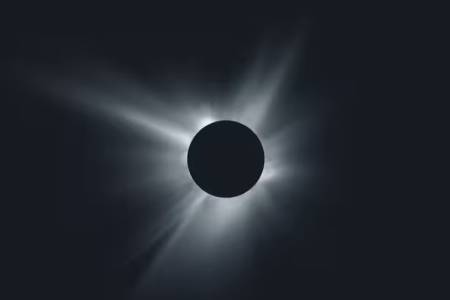 There are lots of maps showing where to go for the April 8th 2024 total solar eclipse and others showing the statistical chance of clouds such as https://www.washingtonpost.com/weather/2024/02/22/april-eclipse-clouds/ From Little Rock Arkansas to the Mazatlan coast there is a high probability of clear weather. The cities from Indianapolis through Cleveland OH, Rochester and Syracuse...
There are lots of maps showing where to go for the April 8th 2024 total solar eclipse and others showing the statistical chance of clouds such as https://www.washingtonpost.com/weather/2024/02/22/april-eclipse-clouds/ From Little Rock Arkansas to the Mazatlan coast there is a high probability of clear weather. The cities from Indianapolis through Cleveland OH, Rochester and Syracuse...
Seiko Designs Equatorial Sundial Watch
Sunday, 24 March 2024 01:42
 When is a watch not a watch? When it unfolds into an equatorial sundial. The watch, designed by Yu Ishihara is called a "Watch Exclusively for Sunny Men" and was part of a contest sponsored by Seiko to "help reimagine what a watch can be", aimed at creativity and perhaps for eventual production. Read about it at...
When is a watch not a watch? When it unfolds into an equatorial sundial. The watch, designed by Yu Ishihara is called a "Watch Exclusively for Sunny Men" and was part of a contest sponsored by Seiko to "help reimagine what a watch can be", aimed at creativity and perhaps for eventual production. Read about it at...
Rare Astrolabe Discovered by Chance in Verona Museum
Wednesday, 06 March 2024 00:17
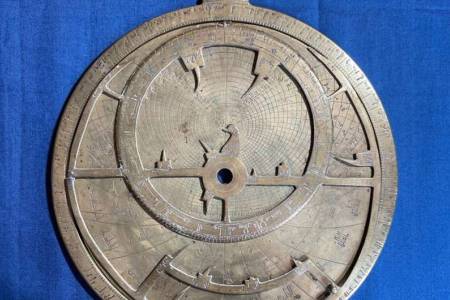 Dr. Federica Gigante, from Cambridge Univerity's History Faculty, discovered a rare astrolabe sequestered in a museum at Verona, Italy. Publishing in Nuncius (1 March 2024) Dr. Gigante presents "a hitherto unknown remarkable astrolabe from Al-Andalus which likely belonged to the collection of Ludovico Moscardo (1611–1681) assembled in Verona in the seventeenth century. The...
Dr. Federica Gigante, from Cambridge Univerity's History Faculty, discovered a rare astrolabe sequestered in a museum at Verona, Italy. Publishing in Nuncius (1 March 2024) Dr. Gigante presents "a hitherto unknown remarkable astrolabe from Al-Andalus which likely belonged to the collection of Ludovico Moscardo (1611–1681) assembled in Verona in the seventeenth century. The...
NASS 2024 Conference to be held in Vancouver, BC June 20-23
Friday, 23 February 2024 17:42
 The North American Sundial Society (NASS) will hold its 2024 conference in Vancouver, British Columbia, Canada from Thrursday June 20th to Sunday June 23rd. The conference will be held at the Fairmont Hotel Vancouver, 900 West Georgia Street, Vancouver BC. The conference will start Thursday afternoon with a traditional reception and sundial door prizes. Friday will be a...
The North American Sundial Society (NASS) will hold its 2024 conference in Vancouver, British Columbia, Canada from Thrursday June 20th to Sunday June 23rd. The conference will be held at the Fairmont Hotel Vancouver, 900 West Georgia Street, Vancouver BC. The conference will start Thursday afternoon with a traditional reception and sundial door prizes. Friday will be a...
World Sundial Day
Friday, 23 February 2024 16:53
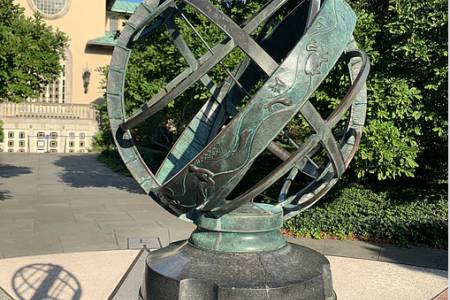 Spanish sundialist Esteban Martínez has launched the resolution to establish the World Sundial Day to occur each year on the Spring Equinox. According to the petition circulated by Martinez,
"Reason Sundials represent the union of disciplines as disparate as Astronomy, Mathematics, [and] Geography...They have an undoubted didactic value in teaching astronomy to young people and as...
Spanish sundialist Esteban Martínez has launched the resolution to establish the World Sundial Day to occur each year on the Spring Equinox. According to the petition circulated by Martinez,
"Reason Sundials represent the union of disciplines as disparate as Astronomy, Mathematics, [and] Geography...They have an undoubted didactic value in teaching astronomy to young people and as...
NASS Course "Elements of Dialing" Starts Jan 6, 2024
Saturday, 18 November 2023 18:21
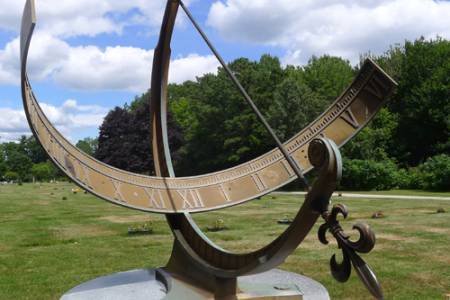 NASS is pleased to announce the upcoming third instance of Elements of Dialing, our introductory course about sundials, their history, and the science that makes them work. The free 13-lesson course, intended for those are new to sundialing, runs from January 2024. The course coordinator will be Steve Lelievre, our Secretary and editor of The Compendium. Steve will be assisted from time to time...
NASS is pleased to announce the upcoming third instance of Elements of Dialing, our introductory course about sundials, their history, and the science that makes them work. The free 13-lesson course, intended for those are new to sundialing, runs from January 2024. The course coordinator will be Steve Lelievre, our Secretary and editor of The Compendium. Steve will be assisted from time to time...
Smithsonian Photo Contest - Jaipur Sundial
Sunday, 05 November 2023 16:30
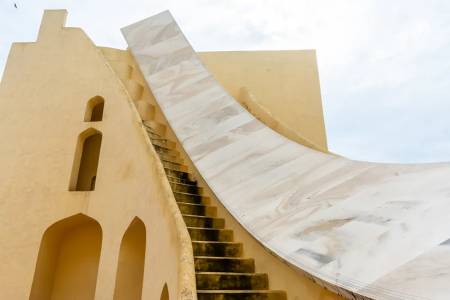 Smithsonian Magazine holds a photo-of-the-day contest. Winner on 30 Oct 2023 was Harita Sistu who took a photo of the large sundial of Jantar Mantar, Jaipur India (taken in July 2022). Harita notes: "I wanted to try my best to capture just how massive the instrument is and bring focus into the incredible skill that went into designing and constructing it."
See other NASS...
Smithsonian Magazine holds a photo-of-the-day contest. Winner on 30 Oct 2023 was Harita Sistu who took a photo of the large sundial of Jantar Mantar, Jaipur India (taken in July 2022). Harita notes: "I wanted to try my best to capture just how massive the instrument is and bring focus into the incredible skill that went into designing and constructing it."
See other NASS...
Houston Pavillion - World's Largest Sundial
Friday, 14 July 2023 23:08
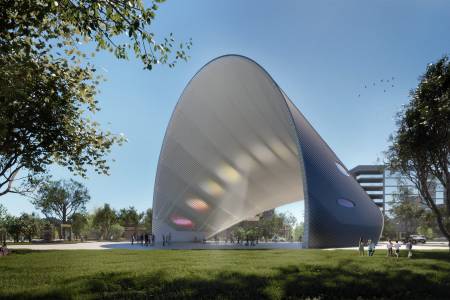 A sundial or performance center or solar generator? It's all three. Called the Arco del Tiempo (Arch of Time), the design by Berlin architect Riccardo Mariano provides the projection of the sun's rays onto the ground through tinted glass apertures spanning the length of its arching ceiling. The elliptical shaped spots change every hour, telling "the solar time each day and delight visitors with...
A sundial or performance center or solar generator? It's all three. Called the Arco del Tiempo (Arch of Time), the design by Berlin architect Riccardo Mariano provides the projection of the sun's rays onto the ground through tinted glass apertures spanning the length of its arching ceiling. The elliptical shaped spots change every hour, telling "the solar time each day and delight visitors with...
Sun Tower Update
Saturday, 01 July 2023 00:36
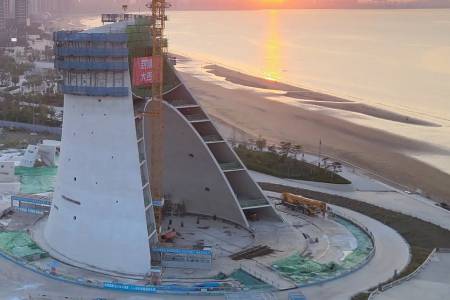 According to NewAtlas.com (https://newatlas.com/architecture/sun-tower-open/), construction of the Sun Tower exhibition building and outdoor theater is underway in the Chinese city of Yantai. The tower is being constructed by a French firm, Ducks Sceno and the engineering firm Arup, raising to 50m (164 ft) gracefully into the sky. The tower symbolizes the historic watch towers of...
According to NewAtlas.com (https://newatlas.com/architecture/sun-tower-open/), construction of the Sun Tower exhibition building and outdoor theater is underway in the Chinese city of Yantai. The tower is being constructed by a French firm, Ducks Sceno and the engineering firm Arup, raising to 50m (164 ft) gracefully into the sky. The tower symbolizes the historic watch towers of...
Point of Infinity Hyperbolic Monument in San Francisco
Sunday, 25 June 2023 22:17
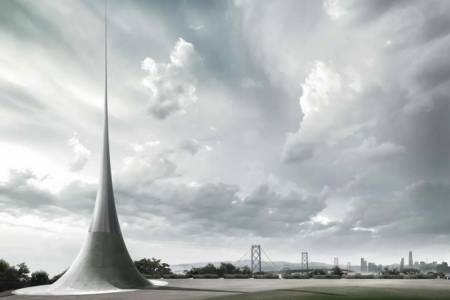 Julie Baumgardner in The Art Newspaper of Jan 13, 2023 reports on the construction project of Point of Infinity, a nearly 70 foot (21m) hyperbolic cone will reach toward the sky as part of a 50 million dollar park development on Treasure Island and Yerba Buena Island.
In a competition held by the San Francisco Arts Commision on behalf of the Treasure Island Development Authority, Hiroshi...
Julie Baumgardner in The Art Newspaper of Jan 13, 2023 reports on the construction project of Point of Infinity, a nearly 70 foot (21m) hyperbolic cone will reach toward the sky as part of a 50 million dollar park development on Treasure Island and Yerba Buena Island.
In a competition held by the San Francisco Arts Commision on behalf of the Treasure Island Development Authority, Hiroshi...
Ice Sculpture Ephemeral in Time
Thursday, 30 March 2023 00:03
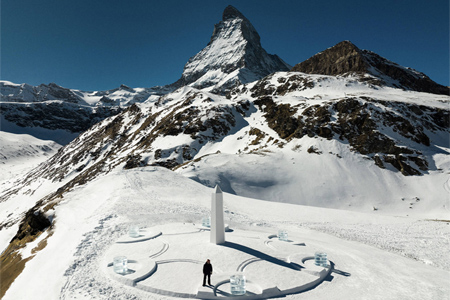 In the Swiss mountains near the resort of Zermatt just beneath the Matternhorn, Stir World reports that "famed luxury Swiss watchmaker Hublot announced Daniel Arsham as its new ambassador, with a compelling piece of temporary land art. Aptly titled "Light & Time", the work is a Hublot-inspired 20-metre sundial resting in the shadows of the Matterhorn mountain."
This sculptural is billed as...
In the Swiss mountains near the resort of Zermatt just beneath the Matternhorn, Stir World reports that "famed luxury Swiss watchmaker Hublot announced Daniel Arsham as its new ambassador, with a compelling piece of temporary land art. Aptly titled "Light & Time", the work is a Hublot-inspired 20-metre sundial resting in the shadows of the Matterhorn mountain."
This sculptural is billed as...
New Sundial for Kika Silva Pla Planetarium
Sunday, 18 December 2022 23:00
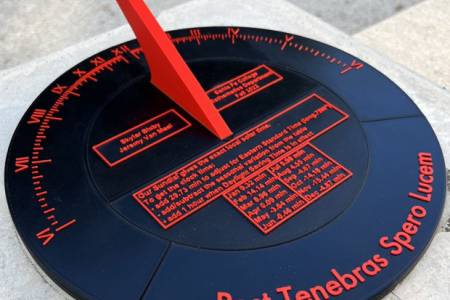 Sklar Bixby and Jeremy Meel, students at Santa Fe College in Florida took on a project to design and 3D-print a new sundial for the Kika Silva Pla Planetarium in Gainesville Florida (located on Santa Fe's Northwest Campus). Under the guidance of Dr. Philip Pinon, Sklar and Jeremy took on a semester long project as part of the Exploring Honors Mathematics class. They designed a horizontal sundial...
Sklar Bixby and Jeremy Meel, students at Santa Fe College in Florida took on a project to design and 3D-print a new sundial for the Kika Silva Pla Planetarium in Gainesville Florida (located on Santa Fe's Northwest Campus). Under the guidance of Dr. Philip Pinon, Sklar and Jeremy took on a semester long project as part of the Exploring Honors Mathematics class. They designed a horizontal sundial...
Lord Nelson's Memorial Dial Dumped
- Details
- Hits: 7388
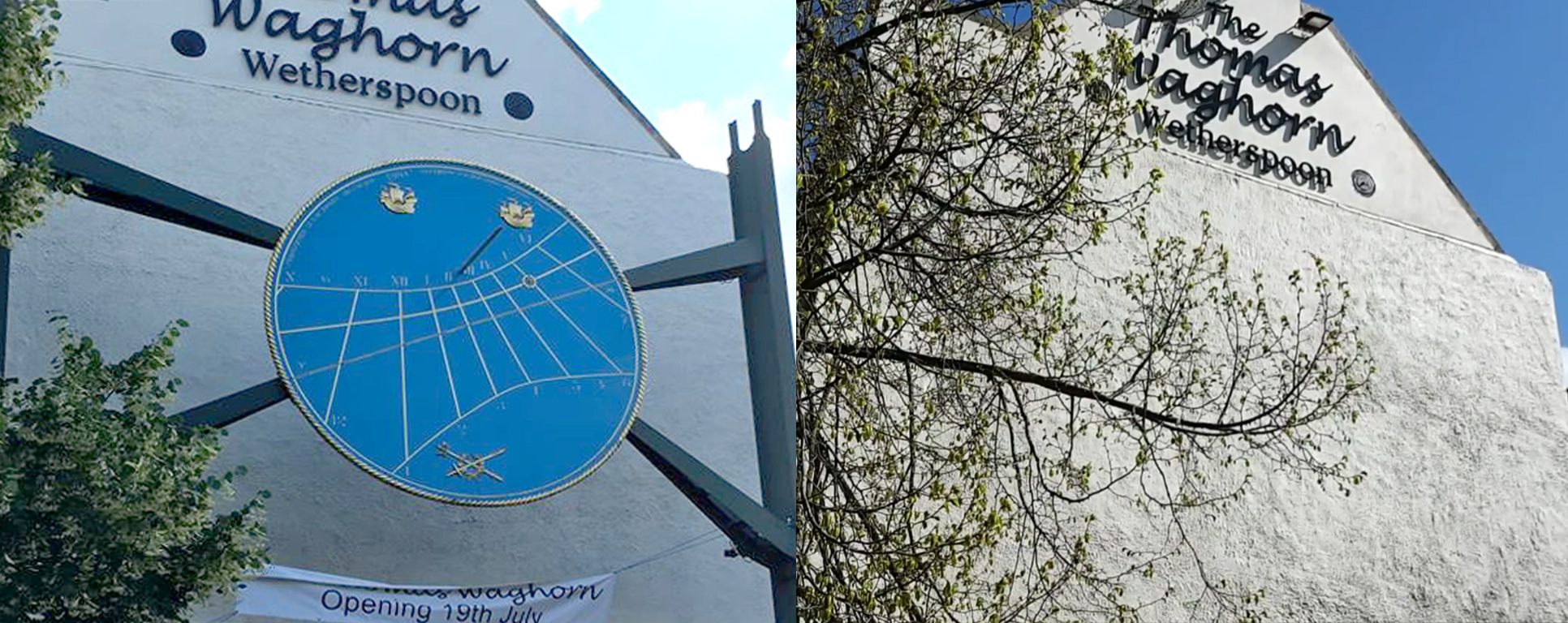 Back in February of 2017 the longstanding timepiece on Railway Street in Chatham was removed as part of Medway Council's plan to de-clutter the business district. The dial was installed on October 21, 1994 to commemorate Admiral Lord Nelson, who in 1805 achieved victory at the Battle of Trafalgar on a Chatham built ship. According to Lynn Cox (http://www.kentonline.co.uk/medway/news/sundial-supporters-want-it-put-123963/) at Kent Online, "Medway Council says the sundial is intact and in storage while its new location is decided....A council spokesman said: 'The sundial has been removed as part of our Chatham Place-Making works which involves de-cluttering the area and creating open spaces for pedestrians.' " In another article by Kent Online, "A Medway Council spokesman said: 'This is all part of the Chatham placemaking project to improve the public realm and open up the route from the railway station through New Cut, St John's Square and Railway St and Military Road, down to the bus station.' "
Back in February of 2017 the longstanding timepiece on Railway Street in Chatham was removed as part of Medway Council's plan to de-clutter the business district. The dial was installed on October 21, 1994 to commemorate Admiral Lord Nelson, who in 1805 achieved victory at the Battle of Trafalgar on a Chatham built ship. According to Lynn Cox (http://www.kentonline.co.uk/medway/news/sundial-supporters-want-it-put-123963/) at Kent Online, "Medway Council says the sundial is intact and in storage while its new location is decided....A council spokesman said: 'The sundial has been removed as part of our Chatham Place-Making works which involves de-cluttering the area and creating open spaces for pedestrians.' " In another article by Kent Online, "A Medway Council spokesman said: 'This is all part of the Chatham placemaking project to improve the public realm and open up the route from the railway station through New Cut, St John's Square and Railway St and Military Road, down to the bus station.' "
It is not clear why the removal of the sundial, a visible attraction high above pedesterian traffic on the south wall of Wetherspoon's Thomas Waghorn pub degrades open space and impedes pedestrian traffic. Does the Council consider this memorial mere clutter and a blank wall more esthetic? Or perhaps looking at the sundial for the time is more wasteful than looking at one's smart phone. Perhaps removing the pub sign or eliminating the overhanging street lights would be more appropriate to clearing Railway Street of clutter. It appears that the Council has followed Johanathan Swift with a modest proposal to remove the Lord Nelson memorial sundial.
Mr. Chrisopher Daniel, designer of the vertical declining gnomonic sundial points out that unless the dial is realigned slightly off south using the declination of the pub's wall, the dial will no longer keep accurate time nor point to the date of the Battle of Trafalgar. Lynn Coxof Kent Online records Mr. Daniel saying, “Frankly, it totally beggars belief that such an historic and fully recorded and registered heritage asset as this can apparently be summarily dismantled and, this done without any researched consideration as to how and where it might be relocated and more importantly, how it might be repositioned so that it operates exactly as before. Sundials of this accuracy are scientific instruments which have been designed solely and uniquely for the exact latitude and longitude of the location of the dial plate and also for that plate’s accurate azimuth and elevation.”
We implore the Medway Council to restore the sundial that has accurately told time and date for 23 years.
Draw the Sundial of Your Dreams
- Details
- Hits: 8773
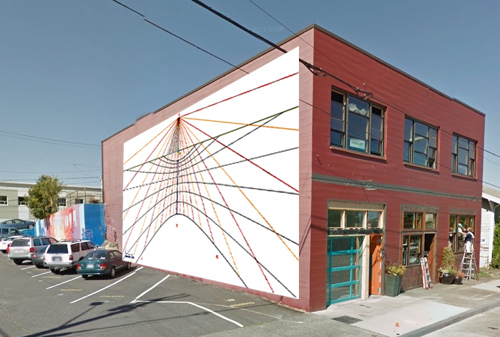 In Bellingham, WA there is a small, plain building with a 54 x 28 feet south facing wall. What kind of a vertical sundial can you imagine on that wall? The Allied Arts of Whatcom County is making a request for proposals for "The International Bellingham Wall Sundial Mural Competition". NW Sun Works, a small group dedicated to the creation of sundials and public artworks, is seeking artist proposals for a working vertical sundial and mural. It is to be constructed on a south facing wall in Bellingham, WA. on a private building near the downtown core. The project is open to any artist, muralist or sundialist, including teams of people who would like to work together.
In Bellingham, WA there is a small, plain building with a 54 x 28 feet south facing wall. What kind of a vertical sundial can you imagine on that wall? The Allied Arts of Whatcom County is making a request for proposals for "The International Bellingham Wall Sundial Mural Competition". NW Sun Works, a small group dedicated to the creation of sundials and public artworks, is seeking artist proposals for a working vertical sundial and mural. It is to be constructed on a south facing wall in Bellingham, WA. on a private building near the downtown core. The project is open to any artist, muralist or sundialist, including teams of people who would like to work together.
Proposals may be made by artists, persons, or teams for:
- submit a design proposal only
- submit design proposal with ability to create the mural
- submit design proposal with ability to do any mural and installation of sundial time telling elements.
If the winning design is a 'design proposal only', they will have local talent available to complete any work required for the sundial portion and for any mural/artwork involved. To demonstrate what a vertical, south facing sundial looks like, the group used the Sonna 4.01 software by Helmut Sonderegger (available at Sonne403 Sundialists Software) to present a deliniated vertical sundial for the Bellingham latitude of 48.75 deg at 2.48 degrees west of the 120th time zone meridian.
"Bellingham is a hidden jewel of Washington State filled with people who are forward thinking and enjoy the outdoors. Protected by the North Cascade mountains and bumped right up to the bay, our views are speckled with island's, volcanic mountains, numerous lakes, thick mossy forests, and are surrounded by small farms. Our city thrives on small businesses which fill our brick buildings thanks to our community which encourages handmade and locally sourced goods. Bellingham is very unique, and we hope for the designs to reflect this vibe."
Read more at: http://www.alliedarts.org/sundial-mural-competition/
Washington Gnomon Contest
- Details
- Hits: 6334
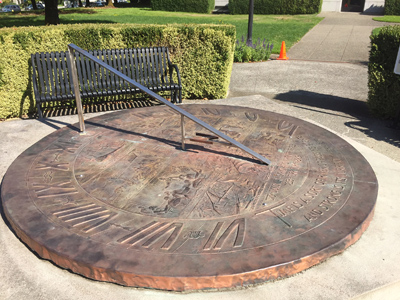 What do you do when your state's college Capitol Campus in Olympia, WA has a beautiful sundial designed by John Elliot, but a wimpy gnomon? The dial has been subject to a poorly designed and vandalized gnomon since it was installed in 1958. Now the Washington State Department of Enterprise Services "invites student designers to create a design for a functional, accurate, and aesthetic gnomon for the state's Capitol Campus sundial." To be eligible for the design contest, students must be enrolled in a Washington State community or technical college. The contest encourages student teams and an honorarium of $1000 will be awarded for the winning design.
What do you do when your state's college Capitol Campus in Olympia, WA has a beautiful sundial designed by John Elliot, but a wimpy gnomon? The dial has been subject to a poorly designed and vandalized gnomon since it was installed in 1958. Now the Washington State Department of Enterprise Services "invites student designers to create a design for a functional, accurate, and aesthetic gnomon for the state's Capitol Campus sundial." To be eligible for the design contest, students must be enrolled in a Washington State community or technical college. The contest encourages student teams and an honorarium of $1000 will be awarded for the winning design.
The gnomon must be made for the sundial latitude of 47 degrees, with a maximum base length of 39.5 inches (1003 mm) to fit the 6 foot diameter circular sundial with center offset gnomon . "Practical concerns such as strength, resistance to vandalism, ease of maintenance, cost, and method of attachment will also be important aspects of a winning design." Esthetics of gnomon style, artistry, and content that blend with the sundial and capitol campus environment are important criteria.
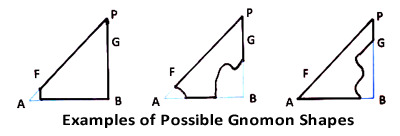 Entries are due by February 24, 2017 and the winning design will be announced March 10, 2017. Read more at : http://des.wa.gov/services/facilities-leasing/capitol-campus/memorials-and-artwork/territorial-sundial/sundial-gnomon-design-contest
Entries are due by February 24, 2017 and the winning design will be announced March 10, 2017. Read more at : http://des.wa.gov/services/facilities-leasing/capitol-campus/memorials-and-artwork/territorial-sundial/sundial-gnomon-design-contest
Malta Sundial May Disappear
- Details
- Hits: 9003
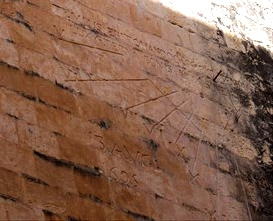 In a recent article by Michael Galea in the Times of Malta a sundial on the wall of the Jesuits' church, next to the Old University entrance on St. Paul Street in Valleta, may soon disappear if action is not taken. The dial, one of the oldest in Malta was engraved onto the brick wall on August 13, 1695, and now "The heritage authorities are earnestly solicited to take immediate action to rescue this piece of history from destruction."
In a recent article by Michael Galea in the Times of Malta a sundial on the wall of the Jesuits' church, next to the Old University entrance on St. Paul Street in Valleta, may soon disappear if action is not taken. The dial, one of the oldest in Malta was engraved onto the brick wall on August 13, 1695, and now "The heritage authorities are earnestly solicited to take immediate action to rescue this piece of history from destruction."
Enternal light needs to shine upon this dial, for as the Latin motto reads "TEMPUS ERIT QUANDO CESSABIT TEMPUS ERITQUE LUX AETERNA BONIS NOX SINE FINE MALIS" or "There will be a time when time will cease and there will be eternal light for the good and endless night for the wicked."
Unfortunately in recent years the sundial has been neglected. The university is closed and building has other short term occupants. A dark stain from a rain spout obscures the right side and a brushy weed is growing in a chink between the stones. This dial is in need of some simple maintenance, weeding and cleaning. But now scaffolding blocks the wall and we believe the dial is slated for destruction.
Fortunately the architect responsible for the building restoration has been contacted with a proposal to restore the sundial and set a plaque with information about it at street level to draw attention to this fine Maltese sundial. What will be the fate of this dial? Hopefully not endless night.
Read about it at: http://www.timesofmalta.com/
Hilltop Park Renovation
- Details
- Hits: 7225
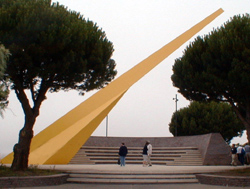 Hilltop Park was built by the San Francisco Redevelopment Agency in 1987 and the iconic 70 foot sundial and nearby skatepark, "The Dish", the oldest skatepark in the San Francisco were in need of repair. Rennovation funding came primarily from the statewide Park Development and Community Revitalization Act of 2008 (Assembly Bill No. 31), which set aside one of its largest grants of \(5 million out of \)368 million to improve parks and recreation facilities in underserved communities throughout California. An additional $1.6M for Hilltop Park renovation came from The Trust for Public Land, Bayview advocacy group Parks 94124 and a private philanthropist.
Hilltop Park was built by the San Francisco Redevelopment Agency in 1987 and the iconic 70 foot sundial and nearby skatepark, "The Dish", the oldest skatepark in the San Francisco were in need of repair. Rennovation funding came primarily from the statewide Park Development and Community Revitalization Act of 2008 (Assembly Bill No. 31), which set aside one of its largest grants of \(5 million out of \)368 million to improve parks and recreation facilities in underserved communities throughout California. An additional $1.6M for Hilltop Park renovation came from The Trust for Public Land, Bayview advocacy group Parks 94124 and a private philanthropist.
On December 3, 2016 public officials and community citizens celebrated the opening of the revitalized Hilltop Park. The sundial received a new coat of yellow paint and refurbishment and the Dept of Parks and Recreation upgraded the surrounding plaza, amphitheater and lighting. "The Dish", was redesigned with a modern flair, and the surrounding park given a surrounding of native and drought tolerant plants. Meaghan Mitchel concludes an article about the rennovation: "The newly renovated park also boasts adult fitness equipment, picnic area with a barbecue pit, and telescopes as well as educational signage to enhance science and cultural learning opportunities."
Read more in an article by Meaghan Mitchel (January 2, 2017):
http://sfbayview.com/2017/01/bayview-community-celebrates-newly-renovated-hilltop-park/
Portland Librarian Searches for Rare Sundial
- Details
- Hits: 7665
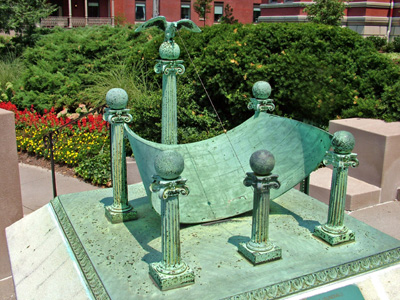 |
UPDATE...PORTLAND MAINE'S LONG LOST SUNDIAL COULD BE ANYWHERE... WATCH WCSH CHANNEL 6 NEWS TO LEARN ABOUT THE SEARCH:
http://www.wcsh6.com/mb/home/portland-maine-s-long-lost-sundial-could-be-anywhere/59670712
WGME dirigo-stories-librarian-races-clock-to-find-rare-sundial
Cranford Dial Needs Your Help
- Details
- Hits: 7507
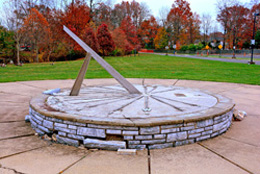 The North American Sundial Society likes to record public sundials that are in good or excellent condition. Dial #797 in Cranford, New Jersey is a sad exception. In 1972 the Kiwanis Club of Cranford presented a 15-foot diameter sundial to Union College as an expression of interest in the college and the youth of Cranford. But the years have taken a toll where it sits adjacent to the William Miller Sperry Observatory. The dais stonework mortar has given way and the concrete dial face has deteriorated.
The North American Sundial Society likes to record public sundials that are in good or excellent condition. Dial #797 in Cranford, New Jersey is a sad exception. In 1972 the Kiwanis Club of Cranford presented a 15-foot diameter sundial to Union College as an expression of interest in the college and the youth of Cranford. But the years have taken a toll where it sits adjacent to the William Miller Sperry Observatory. The dais stonework mortar has given way and the concrete dial face has deteriorated.
A plan to restore the dial is underway. Dr. Stephen D. Nacco, of Union County College, Vice President, Administrative Services & Executive Assistant to the President set up a Sundial Fund under the Union County College Foundation, a 501(C ) 3 not-for-profit organization. Donations can be made online via the Web Site, http://www.uccfoundation.org/give.html with the donor selecting GIVE ONLINE NOW. Choose Donation Type "Other", and then put “Sundial” in the Additonal Comments Area as the reason for the donation.
Checks can be made out to:
Union County College
Sundial Fund
1033 Springfield Avenue
Cranford, NJ 07016
Cranmer Sundial Restoration
- Details
- Hits: 11905
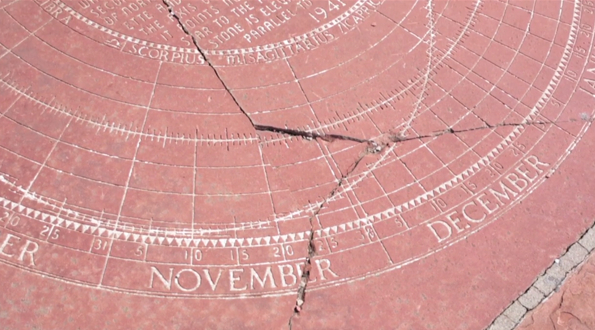
Damage to Erickson Equatorial Sundial in Cranmer Park, Denver, CO. Photo Credit: Save Our Sundial
|
What happens to old sundials? In Denver, citizens of Cranmer Park are taking matters into their own hands. The City of Denver has generously committed $545,000 to the restoration of the Cranmer sundial and plaza through the Parks and Recreation and the Arts and Venues departments... but the citizens must raise another million dollars.
Oatlands Sundial on Endangered List
- Details
- Hits: 8247
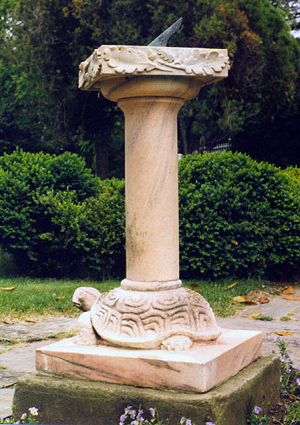
Photos Courtesy of Oatlands Historic House and Garden
|
Sitting peacefully in the garden of the Oatlands Historic House and Garden near Leesburg VA, is a beautiful, but sadly in need of repair sundial. Each year the Virginia Association of Museums, comprising over 500 museums and historical sites within the state, receives nominations for conservation of Endangered Artifacts.
